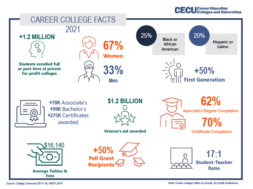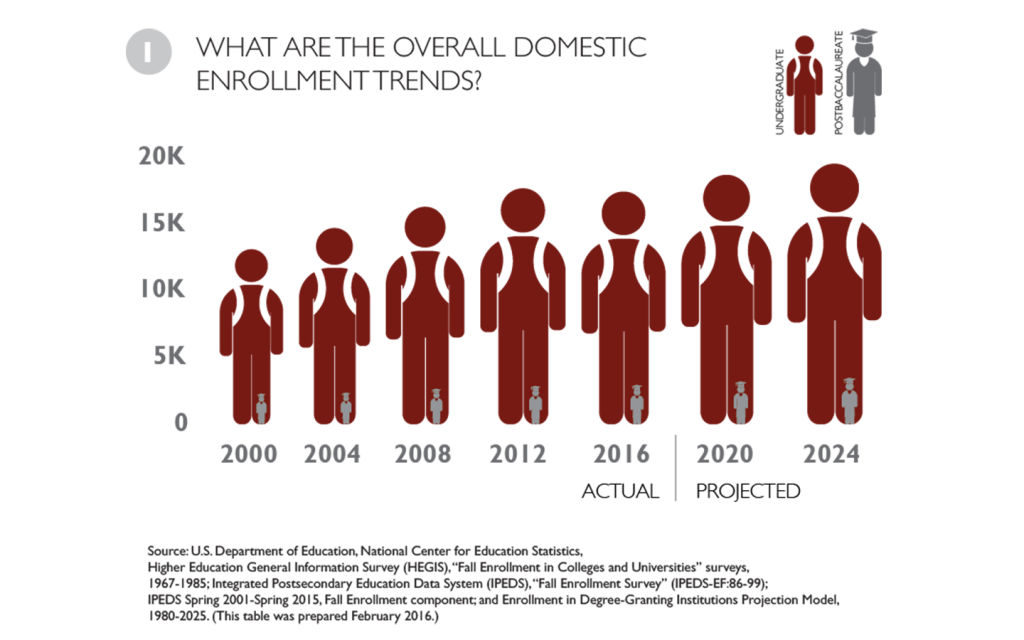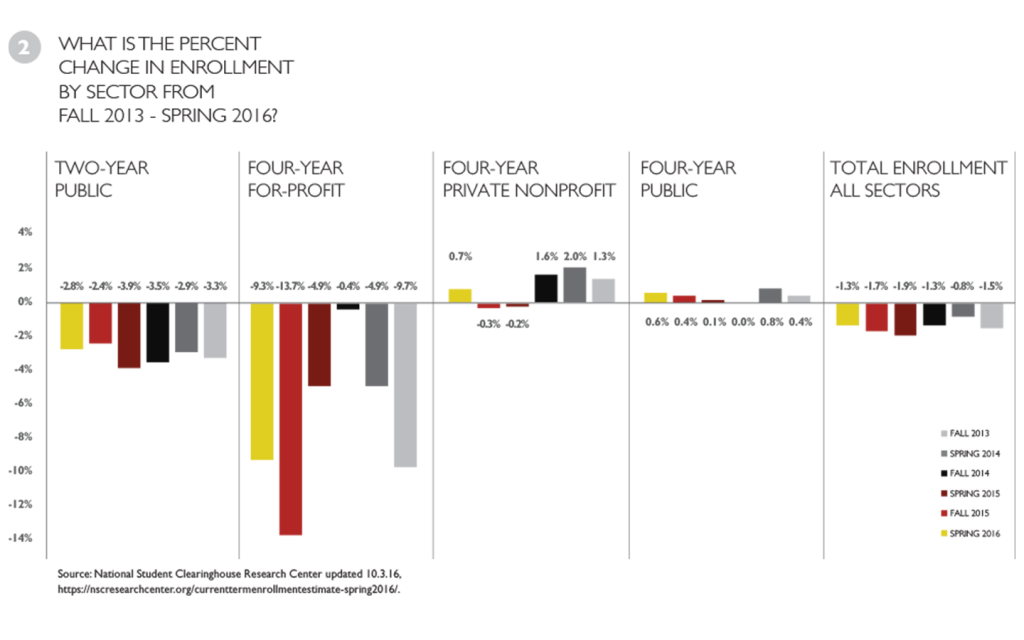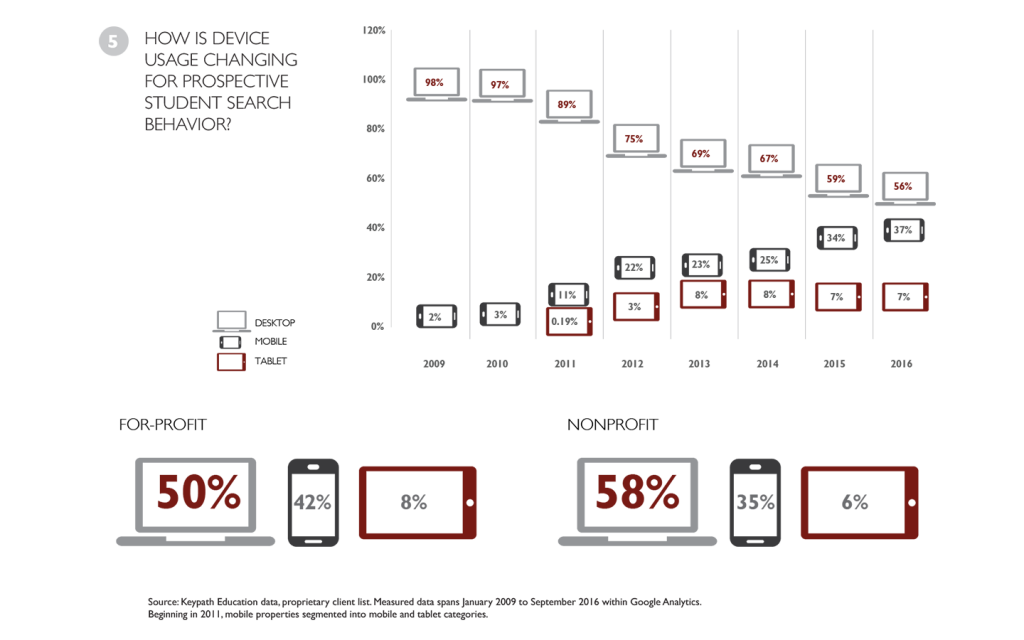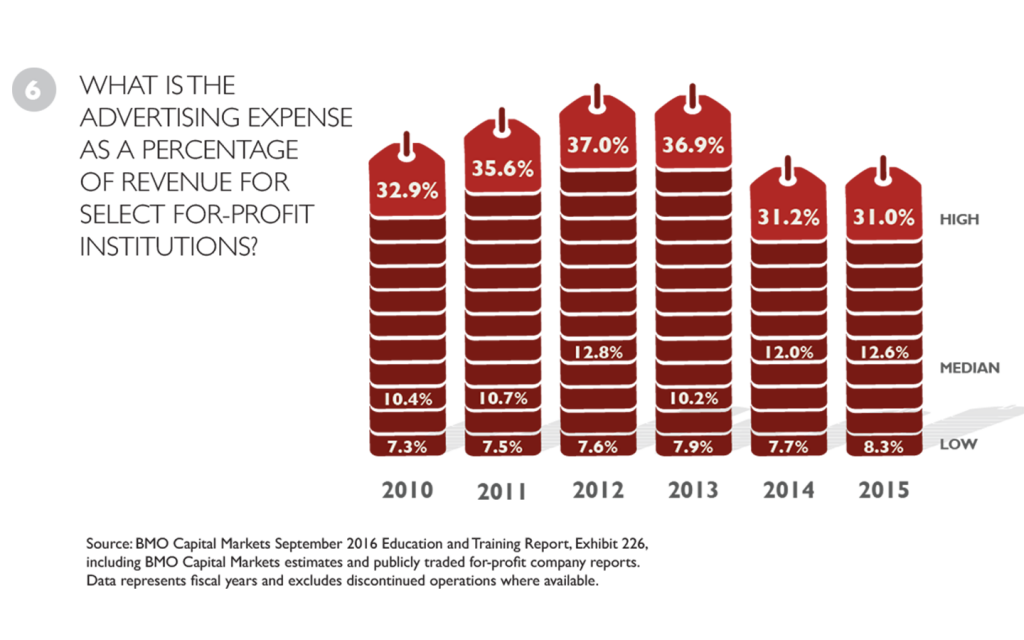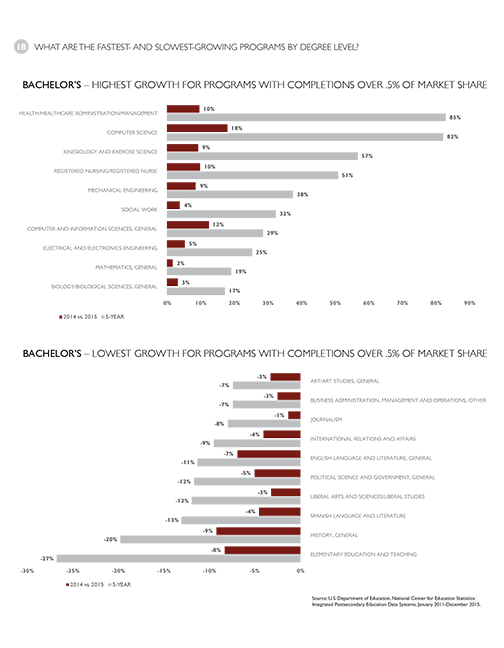
The 2017 Higher Education Benchmarks
By Mike McHugh, Group President, Keypath Education, Reprinted with Permission
Keypath Education has released its third annual higher education benchmarks report, which provides a current snapshot of the sector with key marketing metrics, enrollment drivers, and academic program and student behavior research.
With recent conversations centered on the overall decrease in student enrollment, the benchmarks include specific data about the percent change in enrollment by sector and where the bright spots are, such as in online education. At a time of intense competition, higher education professionals are under more pressure than ever to reach the right students for their institutions. Student search behavior and device usage is rapidly shifting, and marketing practices are following suit. The benchmarks report unveils how schools are spending their marketing dollars and how to maximize return on investment.
This article contains selected data sets and discussion from the white paper. Download the full resource at http://info.keypathedu.com/2017-higher-education-benchmarks.
Enrollment trends
As we navigate uncharted territory in higher education, student enrollment continues to decline; however, research suggests that while this decrease will likely continue for the near term, it will soon begin to stabilize.
Institutions are looking to online training and additional programs to hedge the effects of negative enrollment growth. According to the BMO Capital Markets September 2016 Education and Training Report, nonprofit schools have been gaining share of the online education space at the expense of the for-profit sector, though the latter still owns a disproportionate share.
Students tend to enroll in a school within a 150-mile radius of their residence, even for online programs. According to The Learning House and Aslanian Market Research, the demographic of the online student is changing. The age is trending younger, with the majority being 31-year-old white women with a family income of approximately $55,000.
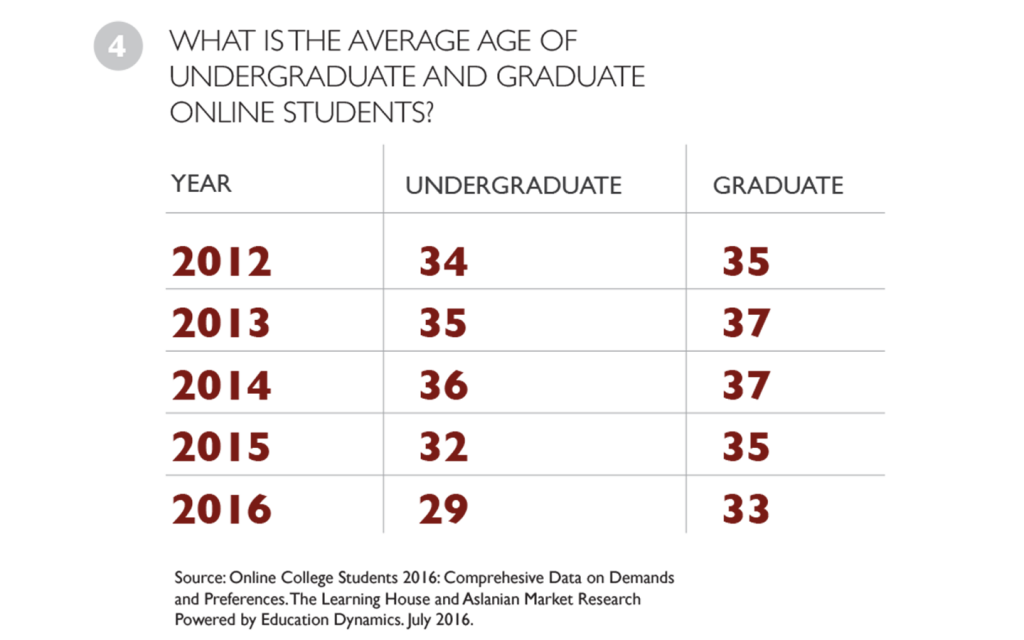
Marketing trends
The marketing landscape continues to evolve at a rapid pace. We have seen a significant shift in prospective student search behavior, and higher education marketing strategies are following suit.
Many institutions are transferring marketing dollars from traditional channels, television in particular, and investing more heavily in social media advertising and other digital channels. Ad spend in the digital space grew 17.2 percent in 2015, and Magna Global estimated that 2016 digital advertising sales equaled TV ad dollars for the first time, with both generating approximately $68 billion, a market share of 38.5 percent. We expect online ad spend to surpass TV in 2017.
More than ever, institutions are focusing on branding and marketing. Identifying your school’s differentiators and tailoring your message accordingly are vital during this time of heightened competition. Reaching the right students for your institution not only increases enrollment – it also improves retention, graduation rates and job placement. When marketing online programs specifically, it’s important to consider your targeting strategy. Remember to consider your position in the marketplace and stay true to your mission as you expand current programs or launch new ones. Although online course offerings open up a global audience, keep in mind that online students are often partial to schools closer by.
We are also constantly reminded of the importance of mobile. Google Analytics reported that across the millions of websites it tracks, more than 50 percent of all traffic now comes from smartphones and tablets. According to the 2016 Online College Students report by The Learning House and Aslanian Market Research, more than 95 percent of online students own a mobile device, and nearly one-third of them conducted all or almost all of their online college search on a mobile device.
Design for mobile first. As social media has become an invaluable channel for targeting prospective students, it’s important to remember these students will likely be clicking on your ad while flipping through social media pages on their mobile devices. If your website is not optimized for mobile, it will be a poor experience and could cost you conversions.
Make sure you focus on conversion even in your social media strategy. Not only is social media a great tool for sharing program information, promoting student events and encouraging engagement, it’s also a place where you can entice your followers to take action: sign up for more information, inquire about your school, etc. According to the Pay to Play: Social Media in Advancement 2016 report from CASE, Huron and mStoner, institutions that are successful with social media use it for prospect research: identifying new prospects and identifying new areas of interest for current prospects based on their engagement with social media.
In this section, we provide more social media quick facts, prospective student search behavior, recent cost-per-click and click-through-rate trends, a breakdown of advertising spend and more.
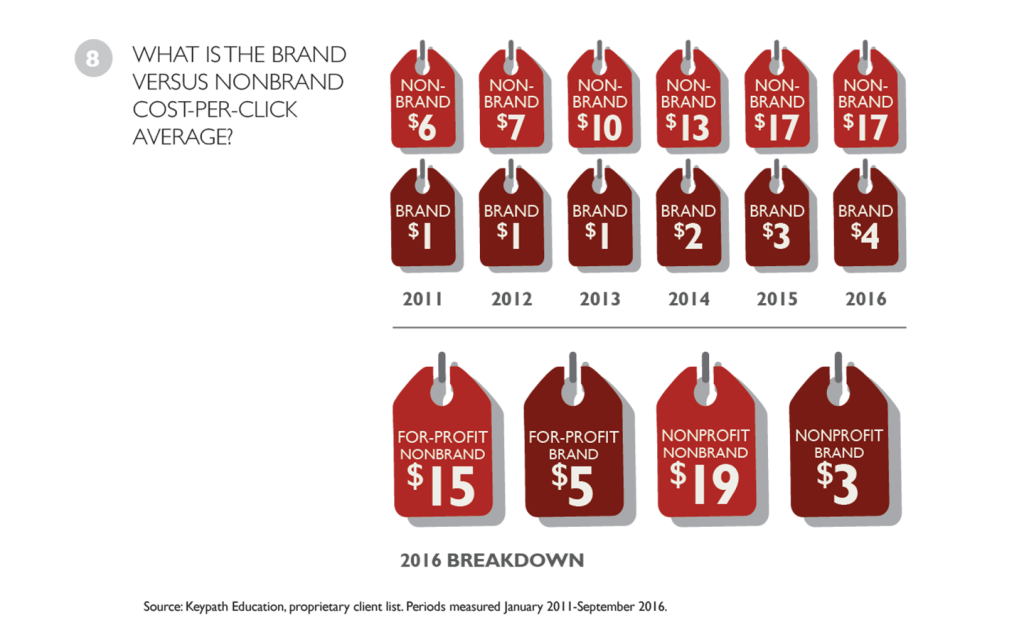
Program trends
Deciding which programs to launch, grow or discontinue requires extensive research of internal and market data. In the 2016 Benchmarks, we revealed the top 10 overall academic programs. This year, we’re sharing the programs with the highest and lowest growth by degree level, providing context of where your programs fall on the scale.
Healthcare programs, closely followed by computer science, continue to dominate, with the majority of high-growth programs being nursing-related. This could be partly due to increasing requirements for practicing nurses.
It’s important to keep in mind that even though a degree is in high demand, that does not automatically mean it is the right fit for your institution. Carving out true program differentiators is a must to ensure you stand out to prospective students. When considering a new program, identify areas of strength and institutional fit, then see if it matches regional occupational demand.
For more academic program trends and a big-picture overview of today’s higher education landscape, download the full 2017 Higher Education Benchmarks report and webinar recording at http://info.keypathedu.com/2017-higher-education-benchmarks.
Higher education is experiencing unprecedented change. Review the latest program, enrollment and marketing trends to build a roadmap to success. If you have questions about how to apply this research to your institution, please reach out to Aaron Edwards at aaron.edwards@keypathedu.com or 913.254.6273.
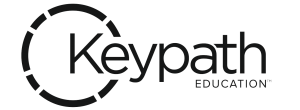 About Keypath Education
About Keypath Education
Keypath Education partners with higher education institutions worldwide to launch programs, grow enrollment, improve learning and connect education to careers by focusing on outcomes. The company has helped more than 4,000 higher education institutions better serve students and graduates, resulting in a strong reputation for its education mission and quality in the United States, Canada, the U.K. and Australia. Since its beginning more than 25 years ago, Keypath Education has been dedicated to changing lives through education. Visit keypathedu.com to learn more.


